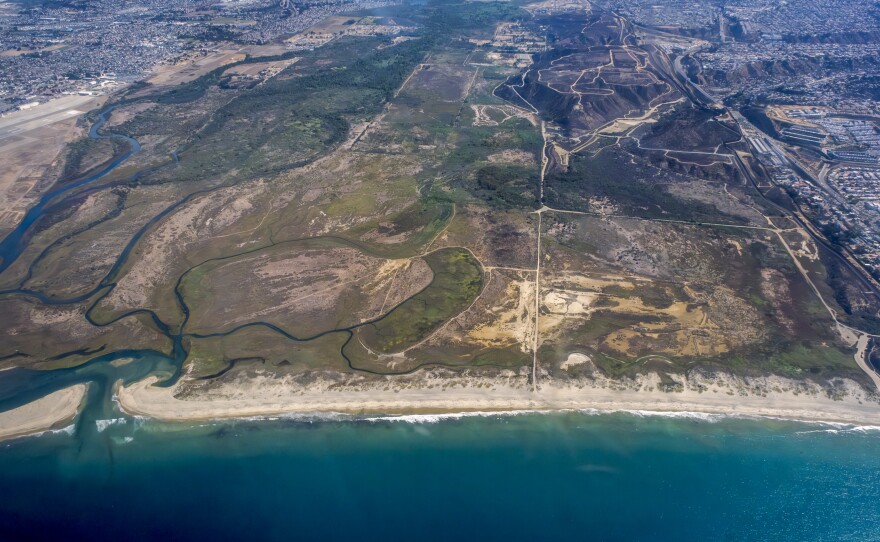The Tijuana River is one of America’s most endangered rivers because of pollution, according to the American Rivers 2024 report.
This week the nonprofit EcoFlight gave a group of advocates, nonprofit leaders and government representatives a bird’s-eye view of the area to better understand the causes of the pollution.
Ramon Chairez, with the nonprofit Un Mar de Colores, grew up in South San Diego County near the border. He helped organize the flight.
"You get a glimpse of how precious the space is and how unique it is in terms of its character," Chairez said, "The canyons, the hills, the mountains and where the water flows. And so you see how all these canyons are being cut and molded by water."
Chairez hopes that the group gains a new perspective of the problems facing the watershed.
"How is it that we change our, our way of life and, and how is it that we can impact what we're doing on, on the ground in a different way that values our river more and our watershed more," Chairez said.

Waylon Matson, with 4 Walls International, said seeing Tijuana from a bird’s-eye view showed him how much housing has been developed.
"This is a great opportunity to, I think, contextualize the growth rates and the anthropological pressures that we're putting on one of the most biodiverse, beautiful, places in the world and how we're all culpable and how we're all trying to find ways and to, you know, get the word out and find pathways forward," Matson said.
Margarita Diaz works with Proyecto Fronterizo de Educación Ambiental in Tijuana. She said many housing developments in Tijuana do not have proper sewage management.
"That's why we have so much spills because they have running water, but they don't have sewage. So it's like it's a lot of holes. And also here in our region or here in Tijuana is different levels, like the permits in the municipality. The water is a state, but the outfalls is the federal. So one thing has to go to three levels of government," Diaz said.
Diaz said she tries to be optimistic about a solution for what she describes as a 30-year-old problem.
"We have been seeing things that stay the same way for 30 years. So it’s very frustrating," Diaz said.






